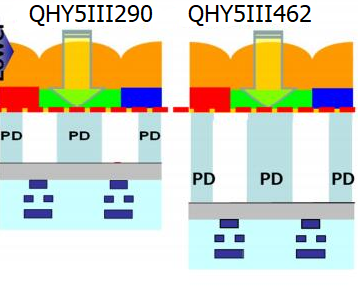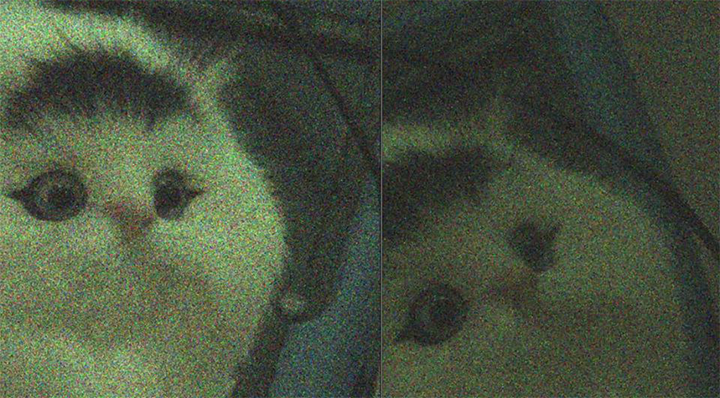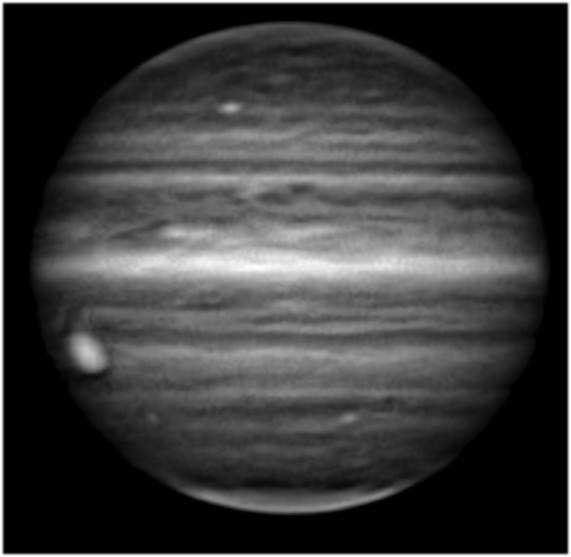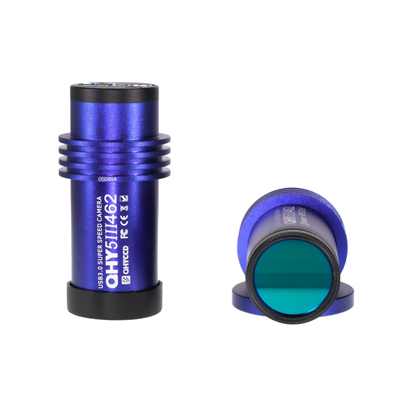An Affordable Near InfraRed Camera!
The QHY5III462C is a colour planetary and guide camera featuring the latest generation Sony STARVIS IMX462 back-illuminated sensor with enhanced near infrared response in wavelength from 800 to 1100nm. The IMX462 sensor has a resolution of 1920 x 1080 @ 2.9µm pixels size, 1/3inch format, 8-bit/12-bit (output as 16-bits), USB3.0 interface and a frame rate of up to 135FPS at full resolution.
The QHY5III462C pixel size and array is essentially the same as the popular QHY5III290 camera but the new QHY5III462 model offers two very significant improvements over its predecessor: Extended NIR QE (with NIR monochrome imaging capability) and sHCG or Super High Conversion Gain.
Extended Red and Near Infrared Sensitivity
The IMX462 sensor is the newest "6th Generation" sensor from Sony. With each successive generation, Sony has made significant improvements in sensor sensitivity. In the 6th generation of sensors, back-illuminated technology is enhanced with physically deeper photo sites allowing the capture of longer wavelength photons in the red and near infrared portion of the spectrum. The back-illuminated structure of the pixel also allows more photons, including longer wavelength photons, to be captured in less time. This greatly improves the sensitivity of the pixel to near infrared in the 800 - 1000nm range which is approximately doubled when compared to cameras using the back-illuminated 290 sensor.

sHCG Mode (Super High Conversion Gain)
The QHY5III462C has "Super High Conversion Gain" capability. By using a lower capacitance, a small amount of charge can be converted to a high voltage resulting in higher sensitivity in low-light conditions. The readout noise of the QHY5III462C is as low as 0.5e-. The following pictures demonstrate the low light improvement over the 290 sensor. The QHY5III462C image is on the left and the QHY5III290C image on the right. The low light conditions and exposures are identical for each image. Conversly this also allows higher frame rates for a given light level thus leading to higher number of stacked frames with resulting lower noise.

Colour and Monochrome Imaging with a single sensor!
The filter matrix in the IMX462 uses organic dye filters. These filters are very efficient at visible wavelengths but become completely transparent in the NIR. For this reason, good RGB color balance requires an external UV/IR filter that blocks NIR wavelengths. Many color cameras build this UV/IR filter into the camera or optical window for normal color imaging. However, in order to fully exploit the capabilities of the sensor, in the QHY5III462C camera this blocking is left out out of the permanent optical path and instead supplied as a removable external UV/IR filter for normal RGB color imaging. Also provided is an external screw-in IR850 filter that blocks visible light and passed wavelengths longer than 850nm where the RGB filters are otherwise transparent. This makes the QHY5III462C a dual purpose camera.


Planetary and Lunar Imaging
Planets such as Jupiter, Saturn, Uranus, and Neptune are rich in methane and planetary imagers often use a methane filter that has a passband around 890nm to image distribution in the atmospheres of these planets. With a peak QE near 100% around 800nm, the QHY5III462C camera is ideal for capturing methane wavelengths while blocking virtually all local light pollution. Also, the earth's atmosphere has higher transparency in the NIR making sharper lunar details easier to obtain. Many mineral components on the lunar surface have different absorption spectrum characteristics in the visible and near infrared bands. By using filters of different wavebands for shooting, colour, multispectral lunar photography and lunar "prospecting" can be achieved.
Guiding
The QHY5III462C is also an excellent guide camera due to its IR sensitivity. This is particularly true when using it with ON Axis Guide systems as these use NIR exclusively for guiding.
ONAG on-axis infrared guide star devices can separate visible light and near infrared light through use of a beam splitter. Visible light is used for deep space photography, and near infrared light is used for guiding stars. The guide star can be realized at any position in the full field of view. QHY5III462C's excellent near infrared sensitivity makes it an ideal partner for ONAG
Specifications
| Model |
QHY5III462C |
| CMOS Sensor |
Sony IMX462 BSI |
| Pixel Size |
2.9µm |
| Pixel Array |
1920x1080 |
| Effective Pixels |
2 Megapixel |
| Sensor Format |
1/2.8" |
| Frame Rate (Full Frame) |
135FPS (8 Bit) |
| Frame Rate (ROI) |
TBA |
| Frame Rate (ROI) |
TBA |
| Full Well Capacity |
12ke- |
| Readout Noise |
0.5e- |
| A/D |
12 Bit |
| Shutter |
Electronic Rolling |
| Interface |
USB 3.0 |
| On Board Memory |
TBA |
| Guide Port |
6 Pin RJ11 |
| Telescope Interface |
1.25" / CS |
| Weight |
88g |





